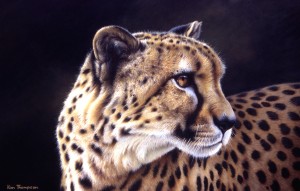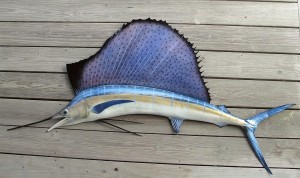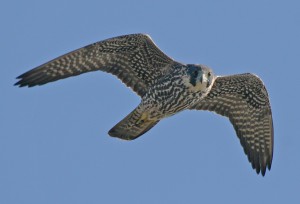Top 3 Fastest Animals In The World
The arms race of hunter and hunted is a ferocious battleground with different species furiously evolving to remain one step ahead of the competition.
Cheetah – 70mph
Cheetahs are one of the fastest animals on Earth and have a terrifyingly quick 0-60 time of a mere three seconds. Cheetahs are unique in the fact they have evolved to such a degree in order to maximize their speed, that they regularly risk brain damage and starvation due to the great physical demands it places on their anatomy.The cheetah is fast, the fastest land animal on Earth, but that speed comes at a great price.
For example, lungs, nostrils and heart are all enlarged within the cheetah to ensure it can process enough oxygen and blood to maintain its explosive speed.
 However, it can only process this for short periods of time and at the close of a lengthy chase not only does it skirt dangerously close to oxygen deprivation but it must rest post-kill before it eats, leaving plenty of time for scavengers to surround it.
However, it can only process this for short periods of time and at the close of a lengthy chase not only does it skirt dangerously close to oxygen deprivation but it must rest post-kill before it eats, leaving plenty of time for scavengers to surround it.
In addition, while its muscle fibre is honed and holds superb elasticity, its physique is slender and lightweight, leaving it vulnerable to broken limbs and completely defenceless against a larger and heavier rival such as a lion or tiger.
Due to these facts – as well as through human-caused habitat loss and predation – cheetah numbers are dwindling and it is currently an endangered species in many African countries.
Sailfish – 70mph
With a top speed on par with that of a cheetah, the sailfish is lightning fast and one of the most difficult-to-catch fish in the world.
 Thanks to its stiffened, tapered body and scissor-shaped caudal fin, the sailfish is built for speed – a speed that comes courtesy of a rapid and ferocious flicking of its tail. Indeed, during a chase to consume fish, crustaceans or cephalopods, the sailfish will flick its tail back and forth hundreds of times, utilizing the powerful muscles which run down its compressed body.
Thanks to its stiffened, tapered body and scissor-shaped caudal fin, the sailfish is built for speed – a speed that comes courtesy of a rapid and ferocious flicking of its tail. Indeed, during a chase to consume fish, crustaceans or cephalopods, the sailfish will flick its tail back and forth hundreds of times, utilizing the powerful muscles which run down its compressed body.
As with a peregrine falcon, the sailfish’s speed is also aided by its ability to retract parts of its body, in this instance its various fins (notably the large dorsal fin that adds over a foot on to its overall height). This feature helps it reduce the effects of drag and minimise resistance to its movements.
Its spine is also very flexible and as with the cheetah allows it to generate increased thrust through the rapid curves it bends its torso into while swimming.
Peregrine falcon – 130mph
If you thought the cheetah was fast, then think again. The peregrine falcon blows its top speed out of the water by over 130mph. Capable of hitting a monumental 200mph during a stoop (dive), the falcon has the highest top speed of any animal on Earth.
 The peregrine’s speed is caused by a combination of factors. Firstly it makes use of gravity, diving upon its prey from great height, even when they themselves are airborne. Secondly, its anatomy – as with the cheetah’s – has been finely honed to maximize speed, evolving over millions of years into the swift and efficient killer it is today.
The peregrine’s speed is caused by a combination of factors. Firstly it makes use of gravity, diving upon its prey from great height, even when they themselves are airborne. Secondly, its anatomy – as with the cheetah’s – has been finely honed to maximize speed, evolving over millions of years into the swift and efficient killer it is today.
For example, the peregrine’s keel – which is located at its breastbone – is significantly larger than average birds’, allowing for bigger muscles and a greater number to attach its wings to its body.
This allows it to generate far more power per thrust when building speed. Further, the peregrine’s wings have evolved to be incredibly pointed, with slim, stiff and unslotted feathers, which helps streamlining and reducing air resistance significantly.
Unlike the cheetah, however, arguably the peregrine handles its awesome speed much better. Firstly, while having the same enlarged heart and lungs, the peregrine does not suffer damage from oxygen deprivation at the close of its stoop. This is partly due to gravity’s beneficial aid in generating its killer speed but also due to the peregrine’s ability to absorb oxygen through its red muscle fibres, of which it has many. This allows it to keep a steady oxygen flow at all times and means that, consequentially, it does not need to rest post-kill, reducing its vulnerability to scavengers.
